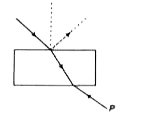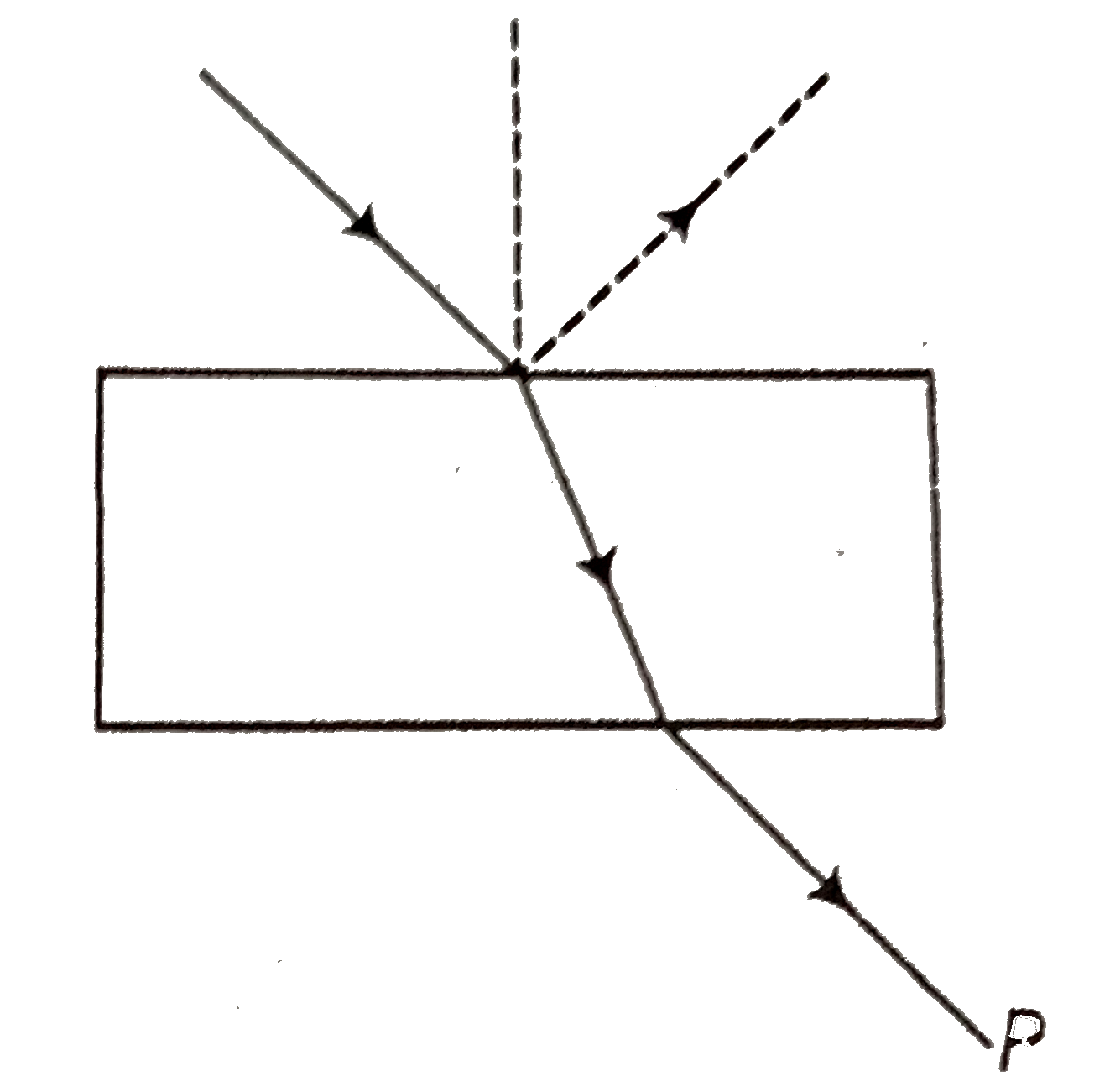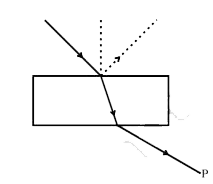Consider a light beam incident from air to a glass slab at Brewster's angle as shown in figure . A polaroid is placed in the path of the emergent ray at point P and rotated about an axis passing through the centre and perpendicular to the plane of the polaroid .
 Solution in Marathi
Solution in Marathi
Step by step video & image solution for Consider a light beam incident from air to a glass slab at Brewster's angle as shown in figure . A polaroid is placed in the path of the emergent ray at point P and rotated about an axis passing through the centre and perpendicular to the plane of the polaroid . by Physics experts to help you in doubts & scoring excellent marks in Class 12 exams.
Topper's Solved these Questions
Similar Questions
If the refractive indices of glass and water with respect to air is 32 and 43 respectively. Calculate the velocity of light in glass and water.From these results calculate the refractive index of glass with respect to water. Given velocity of light in air is 3×108m/s.
01:37View SolutionA gas initially at 17∘C issuddenly compressed to 1/8 of its original volume. Find the temperature after compression ? [gamma=53]
04:55View SolutionWhen a given light beam is passed through a polaroid and polaoid is rotated about the incident light axis, what are the three possiblities ?
02:35View SolutionConsider a light beam incident from air to a glass slab at Brewster's angle as shown in Figure. A polaroid is placed in the path of the emergent ray at point P and rotated an axis passing through the centre and perpendicular to the plane of the polaroid.
02:01View SolutionA beam of light is incident on a glass slab (μ=1.54) in a direction as shown in the figure. The reflected light is analysed by a polaroid prism. On rotating the polaroid, (tan57∘=1.54)
 03:44View Solution
03:44View SolutionConsider a light beam incident from air to a glass slab at Brewster's angle as shown in figure. A polaroid is placed in the path of the emergent ray at point P and rotated about an axis passing through the centre and pependicular to the plane of the plaroid.
06:27View SolutionA beam of light incident on a polaroid and the polaroid is rotated through 360^(@) , about the direction of the incident beam as the axis. If there is no change in the intesity of the transmitted light then the incident light may be
02:06View SolutionA light beam is incident from air to a glass slab at Brewster's angle. A polaroid placed in the path of the reflected beam is being rotated about an axis passing through the centre and perpendicular to the plane of the polariod.
View SolutionA beam of light is incident on a glass slab (μ=1.54) in a direction as shown in the figure. The reflected light is analysed by a polaroid prims. On rotating the polaroid (tan57∘=1.54)
 View Solution
View SolutionTwo polaroids are placed in the path of unpolarised light of intensity I_(0) such that no light is emitted from the second polaroid. If a third polaroid, whose pass axis makes an angle theta with the pass axis of first polaroid, is placed between these polaroid then the intensity of the light emerging from the last polaroid will be
05:48View SolutionA beam of light is incident normally upon a polaroid and the intensity of the emergent beam is found to be unchanged when the polaroid is rotated about an axiis perpendicular to its pass axis. The incident beam is ____in nature.
04:23View Solutionचित्र में दर्शाए एक प्रकाश किरण पुंज पर विचार करें जो वायु से काँच की सिल्ली पर ब्रुस्टर कोण पर आपतित होती हैं

निर्गत किरण के मार्ग में बिन्दु P पर एक पोलेरॉइड रखा गया है और इसे इसके तल के लम्बवत् तथा इसके केन्द्र से गुजरने वाली अक्ष के परितः घुमाया जाता है02:38View SolutionConsider a light beam incident from air to a glass slab at Brewster's angle as shown in figure.
A polaroid is placed in the path of the emergent ray at point P and rotated about an axis passing through the centre and pependicular to the plane of the polaroid.
 02:43View Solution
02:43View SolutionConsider a light beam incident from air to a glass slab at Brewster's angle as shown in figure.
A polaroid is placed in the path of the emergent ray at point P and rotated about an axis passing through the centre and pependicular to the plane of the plaroid.
 03:56View Solution
03:56View Solutionचित्र में दर्शाये एक प्रकाश किरण पुंज पर विचार करे जो वायु से काँच की सिल्ली पर ब्रूस्टर कोण पर आपतित होती है
निर्गत किरण के मार्ग में बिंदु पर एक पोलेराइड रखा गया है और इसे इसके तलके लंबवत तथा इसके केंद्र से गुजरने वाली अक्ष के परितः घुमाया जाता है।
 01:58View Solution
01:58View SolutionConsider a light beam incident from air to a glass slab at Brewster's angle as shown in figure. A polaroid is placed in the path of the emergent ray at point P and rotated about an axis passing through the centre and pependicular to the plane of the plaroid.
04:39View Solution

